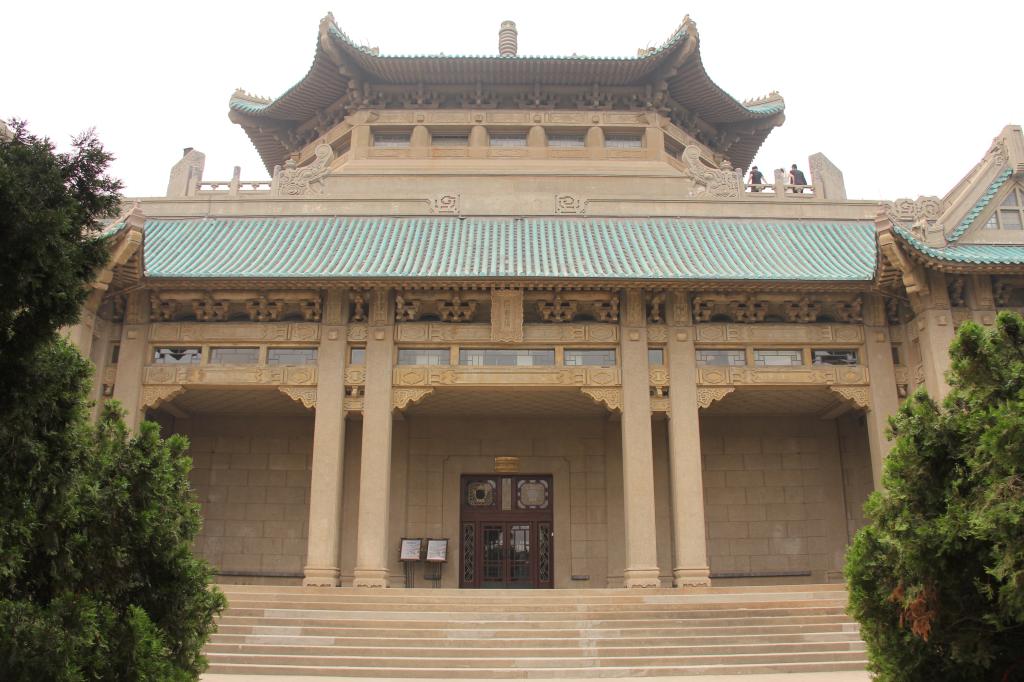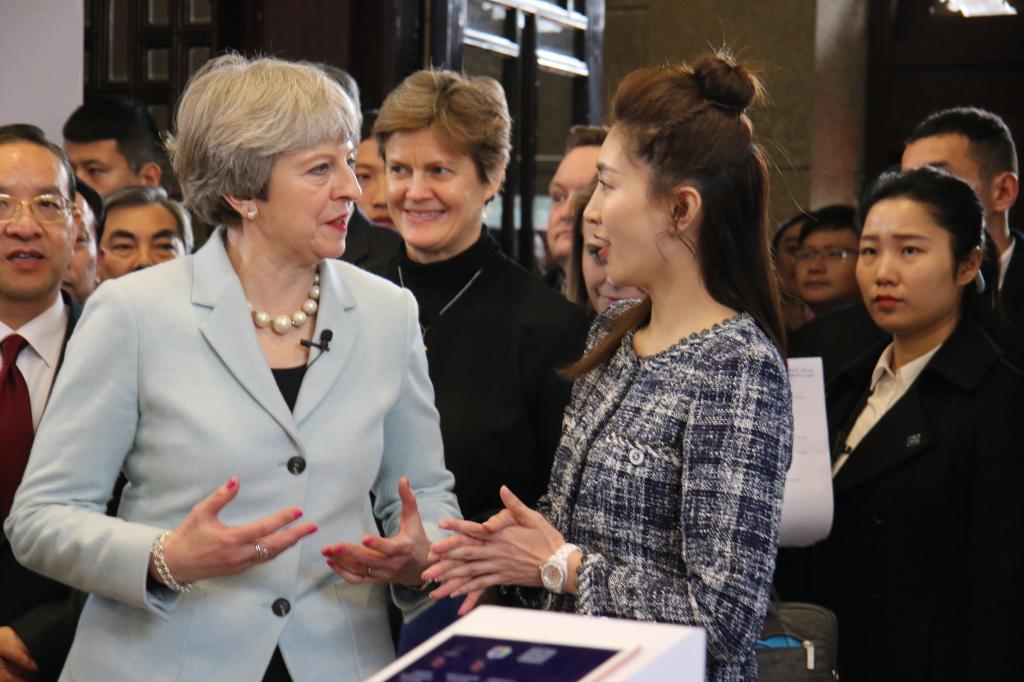The History Museum, which was constructed as the Old Library of WHU in 1935, is one of the most astounding buildings in Wuhan University, now it attracts visitors nationwide, revealing the campus’ history to them.
The past and present of WHU’s History Museum
Wuhan University is one of the most beautiful campuses in China. Its beauty lies not only in its flowers, trees, mountains, lakes and buildings, but also in its centenary vicissitudes. More than one hundred years ago, with the ambition to make China a strong and prosperous country, Zhang Zhidong, the governor of Hubei and Hunan province, built a new-style school in Wuhan. From then on, educators and professors worked there one after another, nurturing the young people for our country; students studied there continuously,satisfying their thirst for knowledge.

The History Museum once functioned as a library
The History Museum, with the most legends, memories and stories of the university, displays the history of WHU. Visiting the museum is just like talking, working and studying here with the historical figures of the university. From the exhibits here, one can feel as if they are moving through time and can construe the desire for knowledge of the students, the erudition of the professors, and the love for their countries of the fellows.

Teresa May visiting the History Museum
In the past this building was a library which witnessed tides of people coming and going. Generations of students used to study here, famous scholars and officers used to give speeches here, important meetings used to be held here, and excellent performances used to be conducted here. At present, this building serves as a museum that records the vicissitudes and glories of WHU and welcomes visitors all over the world. Moreover, as a landmark of WHU with the collective memory of WHUers, important events are often held in this building, such as the PhD degree conferment ceremonies, the speeches given by the best scholars, and some crucial meetings. It is worth mentioning that when the chairman of the Chinese Nationalist Party Hong Xiuzhu and the Prime Minister of the UK Theresa May visited Wuhan University, the History Museum also served as a place to illustrate WHU’s splendid glory.
The management of the History Museum
Staff of the History Museum are never at ease, with their tasks to help the museum function well and keep this ancient building burgeoning all the time. Workers in the History Museum can be roughly divided into administrative staff and volunteer student employees, whose routine work mainly involves registration and arrangements for appointments (including visits and activities), interpretation and training of volunteer interpreters and reports composition. In addition, as members of WHU’s Archives, they also take on the responsibilities of compiling monographs about WHU’s history.
Every semester, the History Museum recruits students to work there as management assistants and interpreters. “Our work here is often considered inconsequential by outsiders, but only when involved in the real practice can you realize that all the trivial tasks actually require efforts to be arranged properly.” Li Fuqin, a staff at the History Museum reveals to us, “You have to ensure that appointments don’t contradict and that we have enough interpreters to handle the situation. Moreover, as the building is a precious cultural relic of WHU, we have to be particularly cautious in organizing all those visitors to guarantee no damage would be caused.”

A volunteer interpreting for the visitors
Training volunteer interpreters is an essential part of their work. Brochures containing history and historical graphs are given out to new interpreters, providing them with a primary impression of this ancient campus’s general history. The second step of the training process concentrates more on the details. Staff in the History Museum lead volunteers to the exhibition hall, giving lectures to them about every display board and talk about stories behind those patterned and printed narration, which makes all those figures hanging in this museum feel fresh and alive, intriguing people’s interests and curiosity.
“History is never pale printed words. I hope our students can observe the details that attract them, which enables them to learn about past events in the flesh.” Says Wu Xiao, a staff in the History Museum who devotes his spare time during Friday nights towards giving lectures to potential interpreters and WHU history amateurs, and providing them with a systematic and full image of WHU’s long-standing history starting from 1893. “It is only when trying to seize the general picture would you be able to do this work with a historical insight, so when confronted with different visitors you can select those aspects in which their interest lies and share more information with them.”

Monographs produced by WHU’s Archive and History Museum
Monographs about the university’s history are published every year, including the Almanac of Wuhan University, the History of the Union of Wuhan University, Research into Historical Relic in Wuhan University, etc. In addition, with the rapid development of digital technology, staff in the History Museum are now working on the building of its website, and a VR History Museum has been released. “We are trying to record history and allow people to get in touch with WHU’s history through various methods. Meanwhile, we can endow our work with modern energetic characteristics.” says Li Fuqin.
Other traces of WHU’ s history on campus
Despite the fact that the History Museum has become one of the most well-known sites of history cultivation in Wuhan University, historical monuments at this centuried university are never too few on campus. Outstanding statues of past generations can be found within a few minutes’ walk, just in front of or behind office buildings, in the corner of a sun-shining corridor or along a remote forested path. All of these remind people of how the achievements made by the pioneers have benefited us now as well as profoundly changed society.
Diversified student organizations are also established to inherit the university’s culture and history in one way or another. Among them, the WHU History Research Association mainly concentrates on historical events and sites on campus. “We gather and learn about the history and major events of the campus at the beginning of the semester, and provide guidance for group visits to WHU.” says Lu Feiyang, a member of the WHU History Research Association, who considers knowledge about the university’s history fairly interesting. Luoying Tourism Club, another student association consists of students who have a special interest in tourism, provides volunteer tour guides of WHU every year during the cherry blossom season.
The work in WHU’s History Museum has been well-executed till now, and it will continue to exhibit its energy and enchantment onto the next generations. With the efforts of the staff, everyone in WHU will come to recognize that they live in such a historical environment, and it will exert subtle and silent influence on them.
(Photo by History Museum)
(Edited by: Yumeng Xu, Jessica Wang, Edmund Wai Man Lai, Liu Jiachen and Liu Xiaoli)